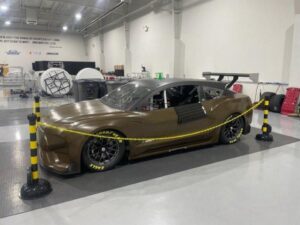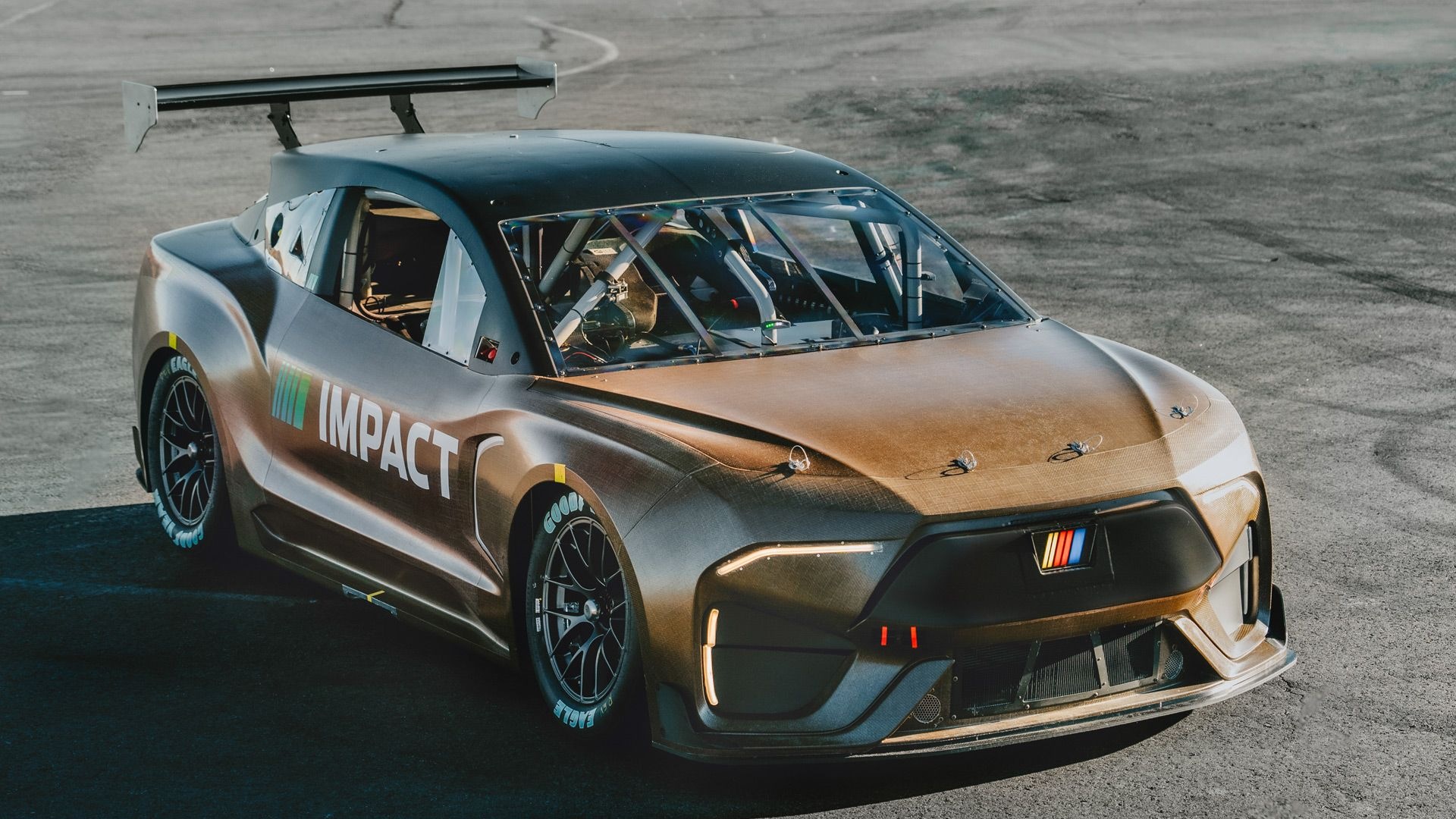NASCAR introduced its first electric racecar in downtown Chicago, marking a shift from the traditional roar of engines to a quieter but high-performance vehicle. Partnering with Chevrolet, Ford, Toyota, and electrification company ABB, NASCAR showcased a crossover utility vehicle that accelerates almost twice as fast as standard racecars, though it is slightly slower on lap times due to its heavier weight.
The car, driven for the first time by semi-retired NASCAR driver David Ragan, offered a unique experience devoid of the usual engine noise and exhaust smell, which Ragan described as “wild.” NASCAR’s goal is to use this electric car to highlight the benefits of electrification and sustainability in racing, with plans to implement sustainable fuels and achieve net-zero emissions by 2035.
The vehicle features plant-based materials and aligns with NASCAR’s broader sustainability efforts, including installing EV charging stations at tracks through ABB’s partnership. Despite Formula E’s existing electric racing series, NASCAR seeks to revamp the fan experience and boost interest in electric vehicles. ABB’s installation of EV chargers at tracks will also benefit the general public.
Unlike typical sports coupes, the new car is actually a crossover utility vehicle. A huge wing on the back makes it aerodynamic enough to be a racecar.
It accelerates almost twice as fast as top gas-powered racecars and can stop almost immediately. But its lap time at Martinsville Speedway in Virginia was two-tenths of a second slower because it takes the corners slower due to being heavier. Ragan said it may go even faster; he wasn’t pushing the one-of-a-kind vehicle to its limits. Risk-taking is for racing, not testing, he said.
Eric Warren, who heads global motorsports competition for General Motors, said market research showed more than half of avid NASCAR fans surveyed would be more interested in purchasing an electric vehicle if they were exposed to it through racing. A main message is taking care with energy and optimizing it, he said.
“We’re committed to electric vehicles,” Warren said. “Racing gives a great platform to discuss a lot of those concepts and educate fans. It’s a laboratory for us to try some new technologies and learn as we educate.”
Burning gas pollutes the air and produces carbon dioxide, which warms the atmosphere and leads to more extreme weather. Burning one gallon produces about 19 pounds of carbon dioxide, according to the U.S. Energy Information Administration. Racing events consume thousands of gallons in a weekend.
The event would certainly be quieter with more electric cars, though many fans love the roar of engines when the green flag drops.





